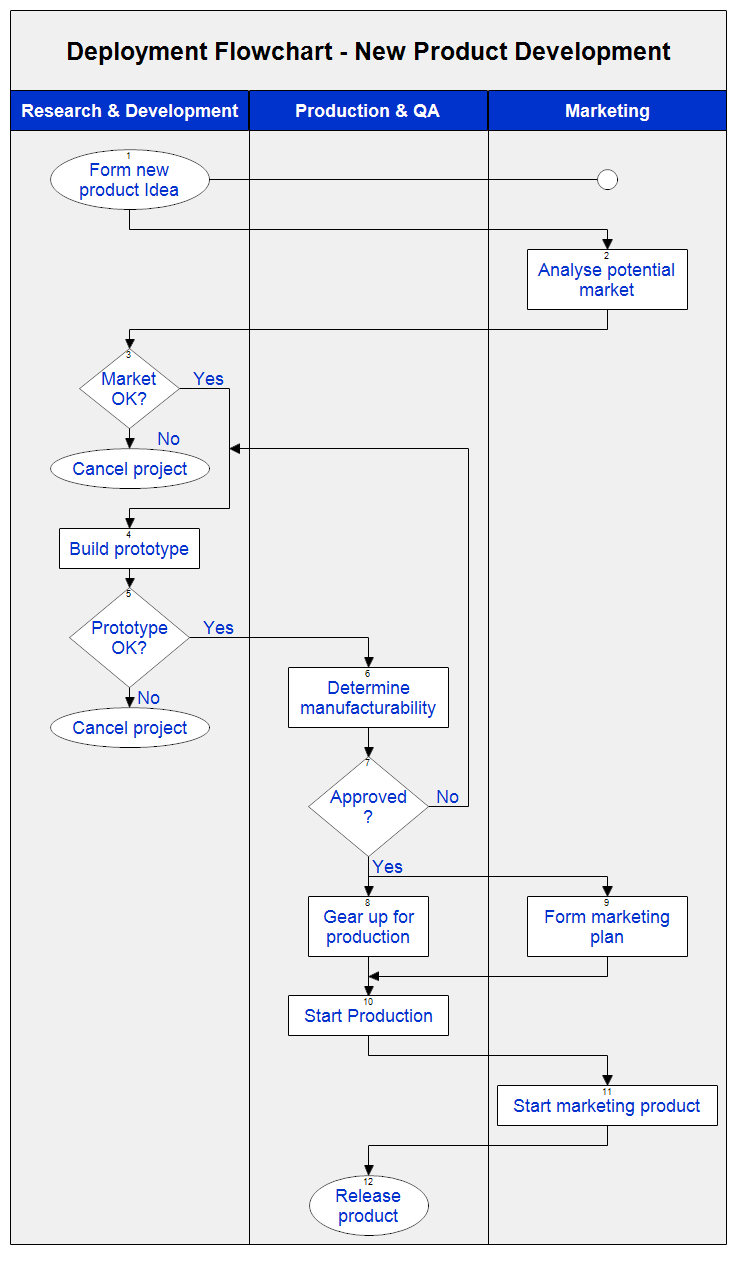New Product Development
There are various stages that have to be followed in coming up with a new product that will suit the market. In this case, our product will have to go through various stages before it is fully commercialized in the market. Therefore, new product development is a good process within the company’s strategic plan that needs to be well attended to (Koen, 2004, p. 8). As a matter of fact, our product will go through the following stages.
Idea Generation
In this stage, ideas for the new product will be obtained through various channels. In a broad perspective, the company can get these ideas by conducting a good SWOT analysis. These ideas can also come from consumer and market trends (Ullman, 2009, p. 5). Employees and our salesmen will play an important role in coming up with new ideas that will help us to develop and launch our new product.
Idea Screening
Ideas that have been generated will be screened to come up with the best outcome. This will be done to eliminate unsound concepts that might not suit our market. Screening is necessary before resources can be devoted to the whole process of developing the new product (Koen, 2004, p. 12).
Concept Development and Testing
In this stage, the company will develop the engineering and marketing details that have to be used. This will include looking for the target market, the amount it will cost to develop the product, and how the market will react (Ullman, 2009, p. 15).
Business Analysis
Business analysis can be done by looking at various market dynamics. In this case, the company will have to come up with a price, estimate sales, and project the break-even point and profitability (Koen, 2004, p. 17).
Market Testing and Beta Testing
In this stage, the company will have to test the product in the market and make the necessary adjustments in relation to customer needs and expectations (Ullman, 2009, p. 15). This will help the company to evaluate if the product is acceptable in the market.
Technical Implementation
Technical implementation includes various processes that have to be followed or initiated (Ullman, 2009, p. 21). This includes; resource estimation, logistical planning, contingencies, supplier collaboration, and others.
Commercialization
In this stage, the company will now launch the product in the market (Koen, 2004, p. 23). As a matter of fact, the company will run various promotions and advertisements to popularize the new product in the market.
New Product Pricing
New product pricing involves various aspects that relate to the new product in the market. These aspects revolve around value segments of the product, product costs, and value analysis (Ullman, 2009, p. 25). All these aspects should be evaluated because pricing will play an important role in the success of the product in the market.
Ideas
There are various approaches that will be used to get ideas on the new product. As a matter of fact, the company will use distinct approaches and mechanisms to idea generation to get the best possible outcome. In this case, the company will carry out a basic research based on SWOT analysis (Ullman, 2009, p. 28). Other ideas will come from the current and existing consumers and market trends. It should be known that the company has its own research and development department that will also help in coming up new ideas.
Employees will be given an opportunity to have a say on product development. In extreme cases, the company will look at competitor products in the market to come up with its own product. Different ideas have to be filtered to settle on the best possible outcome (Koen, 2004, p. 25). In this case, the company will have to filter all ideas as time goes by. Forums will be used to share different ideas and come up with the best new product ideas.
This is because different people can be able to identify faults in a given idea than when it is done on an individual basis. Critical analysis will also be done on each idea to identify its strengths and weaknesses (Koen, 2004, p. 28). This is because an idea can be technical and difficult to implement based on its strengths and weaknesses. In the long run, the company will settle on an idea with more strengths and less weaknesses.
Software like Jive will also be used to filter and settle on the best possible idea. This will be done through the channeling of different voices from the market and competitors to pick the best idea (Koen, 2004, p. 15). The company will also run through its business values to settle on the best idea. This is because an idea might not be in conformance with the company’s goals and objectives.
Criteria
For an idea to move to the next stage, it will have to suit the target market. This is because customers are supposed to benefit by using the product. In addition, the product must be technically feasible to be manufactured. An idea will only be selected if it can meet the current and expected market competitive pressure.
This is because market trends are always changing as time goes by and a product must be flexible to suit such market needs (Ullman, 2009, p. 22). As a matter of fact, expected profits from the proposed product will be evaluated and analyzed to see if the idea is indeed feasible.
Flow Chart

Reference List
Koen, P., A. (2004). The Fuzzy Front End for Incremental, Platform, and Breakthrough Products. New York: Prentice Hall.
RFFlow. (2010). Sample Flowcharts and Templates. Web.
Ullman, D, G. (2009). The Mechanical Design Process. New York: McGraw-Hill.